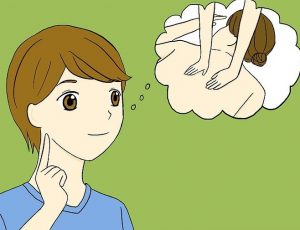Not that long ago I sent off a sample of my DNA to Ancestry.com. To my mind, it was well worth the experience. My genes can be traced not only to the Scottish heritage of which I was aware, but also to the Scandanavian vikings and even to the Jews. As much as that knowledge tickled my fancy and gave me a buzz, my report enabled me to discover cousins I never knew existed.
Well, the DNA testing we offer at our clinic is not like that. This is about your health. Simply put, it identifies genetic traits that effect your health.
There is much information to be gleaned about your health by having your DNA analysed – everything from your predisposition to common conditions, to how you’ll respond to medication.
The type of genetic test you have depends very much on why you’re having the test in the first place. You might have a known genetic family condition and want to have specific genes analysed to find out if you’re at risk. Genomic testing, on the other hand looks at the genome – the complete set of DNA we inherit from our parents. This type of testing gives you an overall picture of your health so that you can take steps to reduce your future disease risk, in effect changing your health story.
It’s not definitive: You could set yourself up to worry about something about which you have no control. Finding out you have a variation in a gene involved in a particular condition doesn’t tell you if you’ll get it or to what extent.
One of the best things about getting to know your genes is that the knowledge can influence your health decisions to help you prevent a disease from developing, delay disease onset or reduce its impact.
Personalised Healthcare: Western medicine has a long history of applying a one-size-fits-all approach to healthcare. But with advances in genetic testing, personalized healthcare is becoming a reality, where your genetic predispositions are recorded on your file and prevention and treatment decisions are made based on that information.
What tests are available?
Of course, there is what we call “The wellbeing bundle” which is the fisherman’s basket of DNA testing. It includes all profiles. Some people, however would prefer limited specific testing … they don’t want the fish, just the prawns and no fries. Here are the available profiles:
Methylation Profile
Methylation is the name we give to chemical the process within the body of taking a single carbon atom and three hydrogen atoms, known as a methyl group, and applying it to countless critical functions. This methylation cycle is responsible for a plethora of important functions in the body from healthy gene expression and immune cell function, to energy production and weight management.  The methylation cycle is also responsible for the regulation of homocysteine levels, which when raised and left untreated increases the risk of certain chronic diseases.
The methylation cycle is also responsible for the regulation of homocysteine levels, which when raised and left untreated increases the risk of certain chronic diseases.
This DNA test can be used to identify any risk factors for diabetes, depression, cardiovascular disease, reproductive issues, healthy cell production and cognitive dysfunction.
What’s a SNP? (Pronounced “SNIP”). SNP stands for single nucleotide polymorphism. SNPs are what these DNA testing packages are looking for. A SNP is a variance in your genetic coding that will influence how your genetic ‘instruction manual’ works.
Hormone and Fertility Profile
This profile looks for SNPs that provide critical insights into oestrogen, progesterone, thyroid and luteinising hormone function as well as the key metabolic pathway MTHFR.
Mood and Cognition Profile
This tests for SNPs associated with the production, function and metabolism of key neurotransmitters including dopamine, serotonin, histamine and GABA.
Detoxification Profile
Identifies SNPs associated with how your liver detoxifies as well as your response to oxidative stress (chemical rusting) and cell oxygenation.
Nutrigenomic Profile
Provides personalised nutrition advice based on your SNPs associated with the metabolism of vitamins A, C, D and B12, as well as folate, glutathione and coenzyme Q10.
Wellbeing profile
Focus on all of the above, that is 60 genetic variants, to offer extensive insight into methylation, detoxification, endocrinology, neurotransmission, oxidative stress and nutrient metabolism.
Currently we are offering incredible savings off these tests. The Wellbeing bundle normally costs $545- but at this stage you can get it for $299. Individual profiles cost $149 for the first with each extra profile for $99-.
Call us for more information
Call us for more information- Does this work like Ultrasound? or
- Is this a TENS machine?
When I launch into one of my dissertations about how it works I can’t help notice how eyes glaze over. I would love to be a fly on the wall when you try to describe your SCENAR treatment to family and friends.
In a nutshell, this is it….
It’s NOT ultrasound. In ultrasound the machine transmits high-frequency (1 to 5 megaHertz, that is 1 – 5 million cycles per second) pulses into the body using a probe. As these sound waves bounce off tissues within your body the machine measures distances and intensity of echos and projects these on a screen.
It’s NOT a TENS machine. TENS stands for Trans-cutaneous Electrical Nerve Stimulator. In simple terms a TENs stimulates nerves via an electrical current applied to your skin. Its main mode of operation is thought to interfere with the transmission of pain signals by blocking the neural ‘gate’ through which pain travels. This is called the “Pain Gate Theory”. It can be moderately effective in reducing pain but its effects are short lived because the body adapts around the TENS to eventually block it off.
SCENAR stands for Self Controlled Electro Neuro Adaptive Regulator and is also called Non Invasive Biofeedback Neuro Stimulation. Like the TENS, SCENAR applies an electrical current across the surface of the skin. It similarities end there. Rather than “shouting” at the body to cause a temporary pain-gate block, it coaxes the entire system to make subtle changes. It achieves this using a biofeedback system. Between each of its impulses (nano seconds) it listens to how the brain is responding to its signals. It then changes its waveform to continue to encourage the body to make change through dialogue.
This electrical two-way communication process enables the body to make changes in real time to not only reduce pain, but also to restore function.
Now you know how it works … its time to make an appointment:
 Massage therapy has been around for thousands of years. Probably since humans discovered it felt good to have someone rub their sore shoulders. It’s thought the term ‘massage’ originates from the Greek word massein, meaning “to knead”. Not every massage you’ve had in the past has met your expectations. How then do you choose a massage that meets your needs?
Massage therapy has been around for thousands of years. Probably since humans discovered it felt good to have someone rub their sore shoulders. It’s thought the term ‘massage’ originates from the Greek word massein, meaning “to knead”. Not every massage you’ve had in the past has met your expectations. How then do you choose a massage that meets your needs?
Know your objectives.
What are you looking to achieve from your treatment? Is it
- pain relief in a particular region of your body?
- treatment for a medical condition such as “Tennis elbow” or “carpal tunnel”?
- Or are you just wanting to relax and feel good?
The different modalities of massage aim to achieve different results and outcomes. If you have have been to a few different massage therapists, you would have realised different therapists are trained in any number of modalities. They also specialise in different techniques.
If you are a sports person you may be interested in seeing someone who is trained in dealing with injuries or reducing recovery times so you can improve your performance. On the other hand, you may be living through particularly stressful times and would like some general tension relief.
Learn about the different modalities available
When people call here for the first time looking for a massage I often ask them what they are looking for. The terms they most often use are:
| Remedial Massage: | literally, a massage that affects, or moves towards, a remedy |
| Sports Massage: | Massage that helps achieve particular objectives in line with sports. This may be a pre-even stimulating massage or a post event massage to normalise the body tissues . It may be a restorative massage given during training to allow harder training with less injury. Then there is rehabilitation massage, which is aimed at alleviating pain from injury. |
| Deep Tissue: | Actually, this is a popular term but there is no such thing as “deep tissue”. Usually, those seeking “deep tissue” massage are looking for something they can feel, as opposed to a soft fluffy massage. |
| Relaxation: | This is often what is described as Swedish massage. Basically it is a whole body rub using oils, which may or may not contain fragrant essential oils. Ultimately, all massages are relaxing. |
| Pain Relief: | This massage describes the objective of getting some relief from pain. Pain relief can be achieved using many different methods and styles of massage. |
All are massage. I may use several different techniques and technologies in the performance of these massaged so as to achieve our mutually agreed upon goals.
How much does it cost?
I can remember, in another life, looking for relief for tight shoulders while I was studying at Uni. As I rang around looking for a massage my first question was always “How much do you charge?”. While ‘costs’ are important, it shouldn’t be the first question. You get what you pay for. Don’t fall into the trap of selecting a massage provider only because they are the cheapest. They may not be qualified and may not belong to a governing association. That may leave you unprotected.
If an hour’s massage is out of your budget then ask to make it shorter. Discuss your objectives with our therapist to settle on mutually agreeable objectives that are affordable to you.
 How is your immunity? Is your body coping with the seasonal changes? This Winter has seen an increase in the number of flu admissions to our hospitals. Gut bugs have also been rampant. As Winter gives way to Spring we are told to expect more flu cases. If its not flu then hay fever is next.
How is your immunity? Is your body coping with the seasonal changes? This Winter has seen an increase in the number of flu admissions to our hospitals. Gut bugs have also been rampant. As Winter gives way to Spring we are told to expect more flu cases. If its not flu then hay fever is next.
Air borne pollen should normally be harmless. Sometimes our immune systems mistakenly identified the pollen as dangerous, and this leads to an over-the-top immune reaction. This causes antibodies to respond, and our mast cells which form part of our immune system, release histamine which inflame and irritate the mucous membranes. This results in the itchy, sneezing, congestion and sore eyes so typical of hay fever.
Pollen is not the only irritant. Other common culprits are house dust, animal dander, dust mites, cockroaches and mould spores.
What can you do to help prepare for this onslaught?
Food …
- Reduce the inflammatory burden on your body by avoiding processed and junk foods like sugar and trans fatty acids
- Eat more fruit and vegetables, which are full of antioxidants such as Vitamin C and Flavonoids
- Include more seafood in your diet. Fish is a good source of omega-3 fatty acids, which are anti-inflammatory, so increase fish consumption or take fish oil supplements.
- Reduce dairy products to three times per week. These that can increase mucus production.
- Cut back on alcohol and coffee as these deplete essential nutrients needed by the immune system.
- Drink two litres of water daily
Stress …
Sustained high levels of Cortisol, which is produced by our bodies to handle stress, over time will have a negative effect on your immunity. To keep this in check:
- Make it a priority to take time out to do things you enjoy. This counters stress.
- Ensure you are getting adequate, good quality sleep. For most people this is 7 – 8 hours. If you find it difficult to get to sleep or if you wake frequently through the night, you need to fix this. Make an appointment now.
- Light to moderate exercise counters the effects of stress but you don’t have to be a gym junkie.
- We use both massage and SCENAR therapy in this clinic to fight the effects of stress in people’s lives. Which is most effective? The jury is still out!
Fortify your immune system …
Several herbs are well-recognised for having immune-building properties, whereas others can help reduce congestion and restore mucus membranes function. Our herbal dispensary is full of evidence based traditional medicines. See our herbal practitioner to find which ones are more suited for you.
Other supplements that can help boost your immune system are Vitamin C, Bromelain, Garlic, Quercetin and Zinc. Vitamin C and Quercetin also act as anti-histamines, and Bromelain and Garlic can help breakdown excess mucus.
We all know that health bodies will have health immune systems. If you are like most people (and especially if you are a mum) you’re the last one you look after. Its time to put yourself first. Why not avail yourself of our online booking system now.

